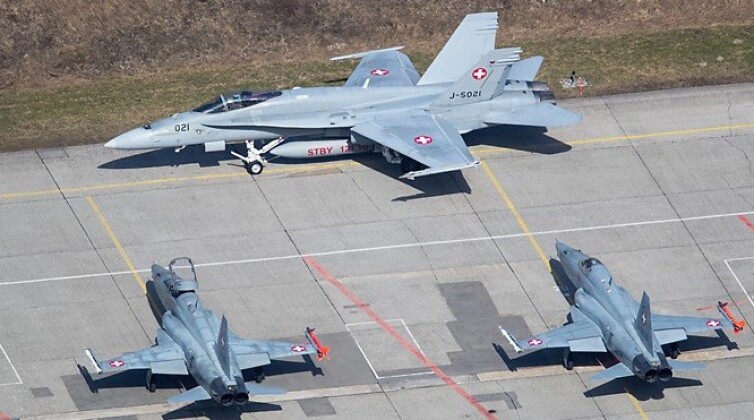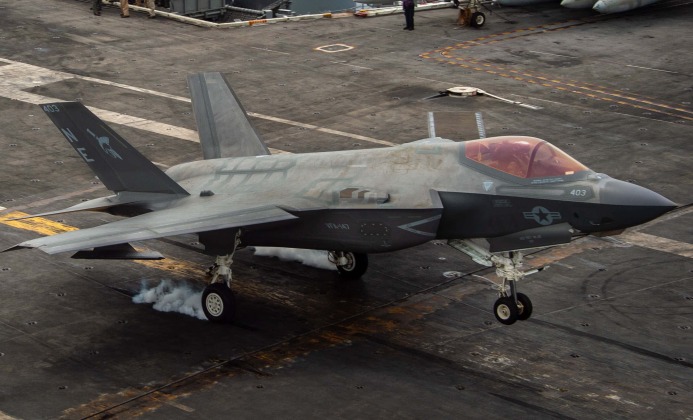Forming almost all carrier based fighter units in the United States Navy, the F-18E/F Super Hornet first entered service in 1999 and remains in production by Boeing in St Louis, Missouri. The aircraft was for several years the only fourth generation fighter on order by the Pentagon, with the F-16 and previously the F-15 being produced exclusively for export. Serious delays developing its successor the fifth generation F-35C, followed by even greater delays bringing the F-35 to a fully operational capability, were largely responsible for the very high number of Super Hornets built. Little over half of the Super Hornet fleet is expected to be replaced by F-35s, with the remainder set to be phased out of service in favour of a yet unnamed sixth generation fighter currently under development.
The Super Hornet has its origins in the 1950s with the development of the T-38 Talon trainer and its combat derivative the F-5 Freedom Fighter, the latter which evolved into the F-5E/F Tiger II third generation fighter in the 1970s that in turn was used as a basis to develop the YF-17 fourth generation lightweight fighter. While the U.S. Air Force rejected the YF-17 in favour of a design which later became the F-16 Fighting Falcon, the YF-17 based on the F-5 evolved into the F-18A/B Hornet which was then adopted by the U.S. Navy from 1984. With the Navy seeking a new more capable fighter in the 1980s, the Hornet evolved into the much larger F-18E/F Super Hornet which is expected to be the final derivative in a long line that began with the T-38 and F-5.

32 squadrons of F-18E/F fighters are currently operational in the Navy, which alongside less than two squadrons of F-35Cs form the service’s entire carrier based fighter fleet. The Super Hornet airframe was also used as the basis for developing the EA-18G Growler electronic attack jet, which first flew in 2006 and of which 13 squadrons are currently operational. The common airframe simplifies training, logistics and maintenance considerably, and ensures the Growler has the same low operational costs as the Super Hornet. Alongside two Super Hornet training units and one reserve unit, the total Super Hornet and Growler fleet comes to 48 units in the Navy – or 768 airframes. The fighter’s large numbers are largely explained by the very wide range of aircraft it replaced following the Cold War’s end, including the F-14 Tomcat and F-18 Hornet fighters, and A-4, A-6 and A-7 attack jets, and for the Growler the EA-6B electronic attack jet. The Super Hornet was popular with the Navy after the Soviet Union’s disintegration for its relatively low operational costs and maintenance needs compared to the larger and longer ranged aircraft it replaced, particularly compared to the service’s top air superiority fighter the F-14 and the cancelled A-12 radar evading attack jet, the latter which would have otherwise replaced the A-6 and A-7. This led the service to replace all fighter classes previously deployed from carriers for a less specialised but much cheaper air wing made up of Super Hornets and Growlers, with the end of the Cold War making reducing costs acceptable even if capabilities were compromised significantly.

The Super Hornet’s low cost has come at a price, with the fighter’s short range in particular widely criticised as having sharply cut the area each carrier can control to a fraction of the size they could if F-14s were in operation – even excluding the fact that the F-18s carry much smaller radars and shorter ranged missiles than their predecessors. Although its endurance is 15 percent greater than the lightweight F-18A/B Hornet, it has only 50 percent of the F-14’s capability to deliver a fixed set of ordinance on target and cuts carriers’ radii of influence by 50 percent – and thus their area of influence by 77 percent compared to the F-14. The impact on deep strike capabilities of the cancellation of the A-12, and retirement of the A-6 and A-7 without suitable replacement has been more serious still, with not only range but also stealth capabilities having been sacrificed. Where the F-14 was widely considered the most capable fighter in the Western world from 1974 until the mid 2000s, when the first F-22s joined the U.S. Air Force, the F-18E/F has never held a similar status but is considered versatile enough to fulfil all kinds of roles relatively inexpensively. The fighter is one of the very slowest of the fourth generation and has a limited flight performance and low thrust/weight ratio, which combined with its lack of stealth has brought its survivability against high level adversaries to question. Deployment of the E/A-18G in a supporting role, however, can help compensate for this with one of the most capable electronic attack capabilities in the world.

The U.S. Navy in the 2010s sought to cut Super Hornet production short to focus on acquisitions of fifth generation F-35Cs, although issues with the much maligned F-35 program meant that this was not considered viable. In the 2020s Navy efforts to similarly refocus away from Super Hornet production to focus on the Next Generation Air Dominance (NGAD) sixth generation fighter program were cautioned against by the House Armed Services Committee on the basis of the F-35’s precedent. A committee aide thus told reporters in 2021: “We’re aware that the Navy wants to focus more resources and funding on NGAD. But if you recall eight or 10 years ago, they tried to do the same thing when F-35C was in development. They truncated the Super Hornet line to focus more on F-35C, and they found out, as the F-35C kind of struggled, the Navy had to go back to procuring more Super Hornets.” He added: “We’re cautious about the Navy’s approach to truncate a hot production line while they focus on a new development program. And given the technology they’re trying to integrate into NGAD, it’s probably not going to be any easier than what F-35C was.” Thus depending on progress with the sixth generation fighter and the F-35C, the latter which is currently in service only in limited numbers and still considered far from combat ready, the Navy will likely need to rely very heavily on the F-18E/F for well over a decade to come. Moves by the Pentagon to deeply cut F-35 orders for 2023, and continued refusal to approve full scale production due to wide ranging performance issues, will only further delay the type’s emergence as a viable replacement for a portion of the Super Hornet fleet.
